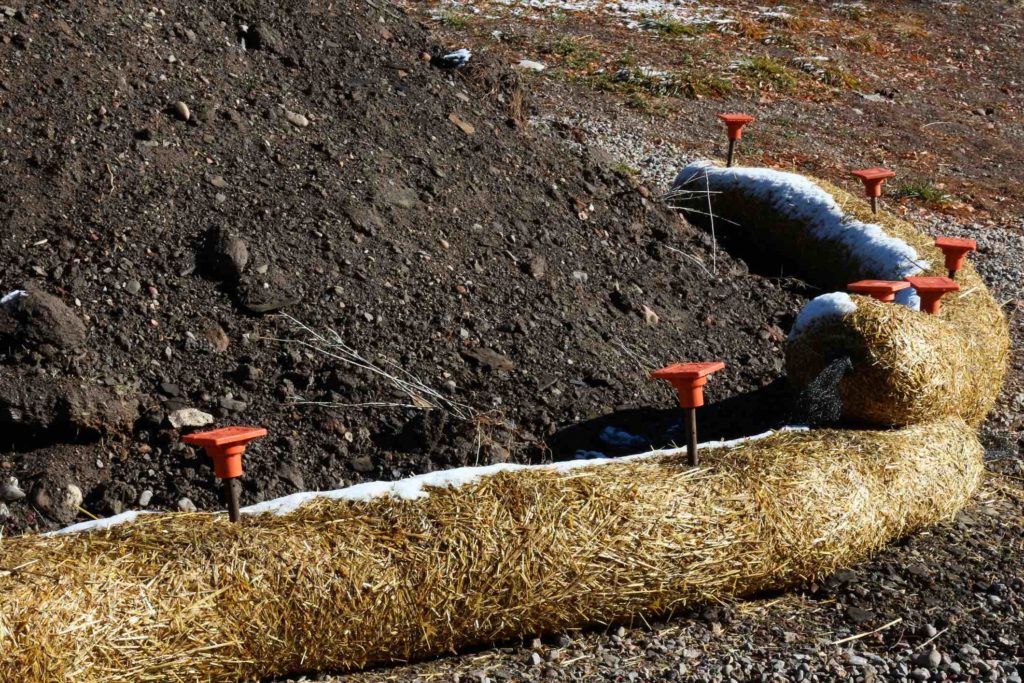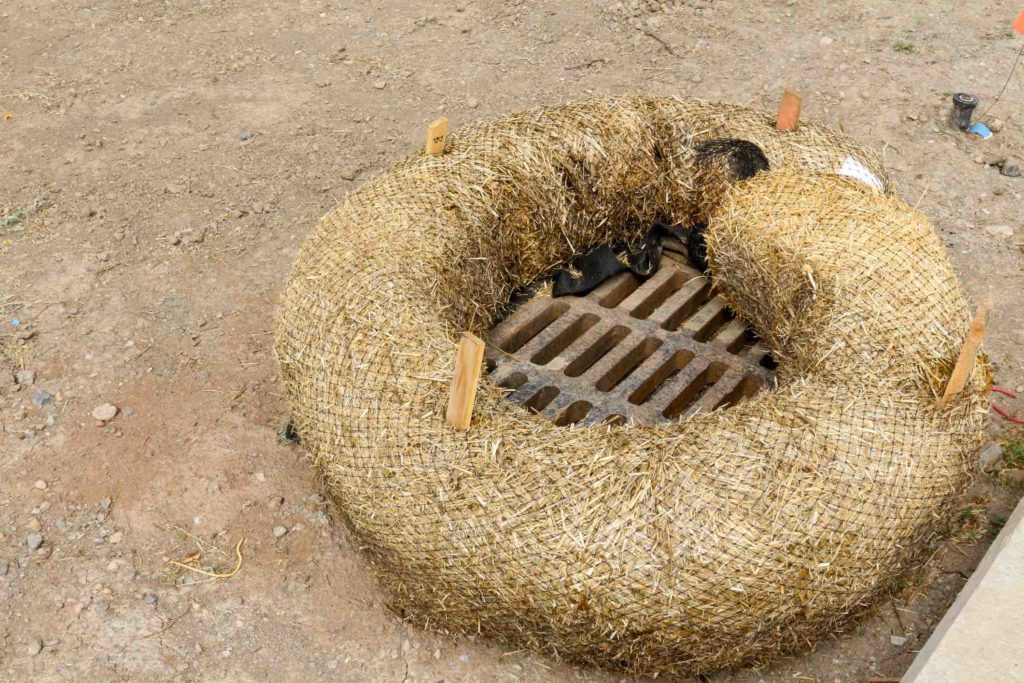As the saying goes, ‘Failing to plan is planning to fail’. The very essence of achieving erosion and sediment control lies in the ability to predict and plan for them prior their occurrence. In return, the planning aspects related to contingency and preparedness to events culminating from erosion and sediment can then be handled with enough basis of variables that could affect the erosion and sediment control plan (ESCP). A plan needs to be in place to deter the effects of erosion and sediment build up. There are different scenarios and factors contributing to all the conditions that drive the processes that lead to erosion and eventual sediment generation. These factors do not exist in isolation but in most instances they work in synergy to contribute to erosion and sedimentation – hence planning should consider all scenarios possible given the multifaceted nature of the phenomena that result in erosion and sediment. The article will discuss key points related to why there is the need for an erosion and sediment control plan, what it entails, and which aspects of the erosion and sediment plan can utilize GRT products.
Managing nature?
By definition, erosion and sediment control refers to the suite of management interventions applied to mitigate sediment pollution during the construction phase of land development, agriculture, mining and road construction amongst many other scenarios. Historically, the natural processes of erosion, transportation and sedimentation always existed and are still active in present day which has shaped the current landscape of our world. As the world population grows, there has been an increase in demand for infrastructure, mining, urbanization, agriculture, road construction just to mention but a few which inevitably accelerates the processes of erosion, transportation and sedimentation. The problems associated with erosion and sedimentation differ from one scenario to the other. In agriculture, susceptibility to soil erodibility increases due to plowing and tillage owing to removal of the protective vegetative cover as a result of cutting or burning. In addition, erosion can also produce harmful sediment which can contribute to reduction in productivity of fertile soils in agricultural land.
Civil and mining development

The process of road construction results in large amounts of erosion because the very important protective vegetative cover is removed, and steep cut and fill slopes are left exposed. In preparation for the different layers of the road different materials is obtained from borrow pits and if this material is not managed post the construction of the road it provides another source of possible erosion and sedimentation. Erosion emanating from road construction leads to local scour troubles coupled with detrimental sedimentation downstream at bridge piers and erosion of abutments which often contribute to bridge failure during floods. Construction in general contributes to a greater proportion of the sediment load in urban areas. Some construction practices that contribute to high yields of sediment include removing of surface vegetation, stripping and stockpiling topsoil, erodible excavated soils, pumping of water from flooded basement excavations and the tracking of mud in the streets by construction vehicles. The earthworks in mining operations generate a lot of sediment which often finds its way into natural streams. Post mine use, mine dumps and spoil banks actively continue to erode as a result of rainfall over time with some scenarios where challenges associated with construction and maintenance of navigation channels traced back to mine closures from a century ago. As mining is not only in reference to minerals activities such as gravel stream mining often result in channel instabilities related to upstream headcutting which is known to trigger instability problems at highway bridges.
The impact of sedimentation
Channel and bank erosion can develop from stream and river control works, for example channel straightening may increase slope and flow velocity, in turn initiating erosion. Water quality is negatively affected by sediment which impacts manufacturing processes and at the very least human consumption. Sediment deposition in irrigation and drainage canals results in high costs of maintenance, removal and servicing. Sediment also catalyzes, carries and acts as a storage agent for other types of pollution and reduces flood-carrying capacity which results common overflows and increases chances of floodwater damage. Sediment degrades water quality for municipal supply, recreation, industrial consumption, hydroelectric facilities and aquatic life. Chemically, waste is assimilated onto and into sediment particles leading to ion-exchange between solutes and sediments hence become source and sink for remnants of pesticides, residues, adsorbed phosphorus, nitrogen, heavy metals, radioactive materials and pathogens such as bacteria and viruses. Overall, sediments pose threats to conservation, development and utilization of soil and water resources.
Are environmental regulations, health and safety concerns or potential profit loss a concern right now?
What should an ESCP cover?
We have outlined the challenges and impacts associated with erosion and sedimentation, to lead us to the importance of developing an erosion and sediment control plan (ESCP). Without doubt the challenges are many but with a plan in place backed with all necessary erosion and sediment control practices to the area of interest implementation of the suite of management interventions is possible. Local erosion and sediment control regulations should include interventions such as soil stabilization, soil stockpile stabilization, permanent stabilization, sediment basins and traps, stabilization of earthen structures, cut and fill slope design and construction, concentrated runoff downslopes, slope maintenance, stormwater management, vehicular sediment tracking. A leading Australian consultancy outlines the following key elements of an ESCP:
- Timing of works
- Locations of lands where a protective ground cover will, as far as is practicable, be maintained
- Access protection measures
- Nature and extent of earthworks, including the amount of any cut and fill
- The diversion of runoff from upslope lands around the disturbed areas where possible
- Location of all soil and other material stockpiles including topsoil storage, protection and reuse methodology
- Location and type of proposed erosion and sediment control measures
- Site rehabilitation proposals, including schedules
- Frequency and nature of any maintenance program
- Any other site-specific soil or water conservation structures
The components of the plan on a bare minimum should include a location or vicinity map, a narrative describing the proposed plan in a clear and concise way with mention of existing conditions and adjacent areas with the proposed erosion and sediment control measures backed by the rationale for the decisions.
Don’t catch sediment – stop erosion at the source!
GRT products and services focus on the goal of preventing erosion – whether by water, wind, traffic, or earthworks – rather than catching sediment. This process can be termed soil surface stabilization or binding. The nature of stabilization is governed by the erosion forces, for example drainage patterns, which drive the choice of control to choose from. GRT offers multipurpose GRT Enviro Binder. which is applicable to most soil types hence can be relevant to any erosion and sediment control plan. Existing bare or exposed soil areas can be protected from erosion and sedimentation at the source using GRT Enviro Binder. For broad-scale, open areas where wind erosion is prevalent, GRT: Soil-Loc can also be utilised as a tough and very cost effective erosion control agent. Like GRT: Enviro-binder, GRT: Soil-Loc is also applied hydraulically – so they are cost effective, much quicker and also much safer to apply on slopes and difficult terrain. Where it is essential to incorporate sediment basins, our GRT: Liquid-Floc and GRT: CC water treatment technologies are concentrated and safe technologies to cost-effectively and quickly settle out suspended sediments.
Planning to succeed
We do need erosion and sediment control plans (ESCP) to provide a blueprint of conservation, environmental protection and utilization of water and soil resources within and adjacent to any project undertaking. It entails site management using a working document that consists of topography, drainage patterns, soil types, ground cover and areas within the vicinity of the intended project. A plan that focuses on erosion prevention best utilizes GRT products, which are subject to recommendations from the GRT team to deliver engineered solutions and environmentally beneficial project outcomes.
Your feedback is important to us. If you enjoyed reading this Global Road Technology industry update and found it informative, please let us know by leaving a REVIEW.
REFERENCES
- Julien, P.Y. 2010. Erosion and Sedimentation. 2nd edition. Cambridge University Press.
- Nigam, G.K. Sahu, R.K., Sinha, M.K., Deng, X., Singh, R.B., and Kumar, P. 2017. Field assessment of surface runoff, sediment yield and soil erosion in open cast mines in Chirimiri area, Chhattisgarh, India. Physics and Chemistry of the Earth.
- Pitt, R., Clark, S.E., and Lake, D. Construction Site Erosion and Sediment Controls: Planning, Design and Performance.
- Website: https://seec.com.au/wp-content/uploads/2018/07/ESCP-ITPChecklistMM.pdf
Troy Adams
Troy Adams is the Managing Director of Global Road Technology (GRT) Specialising in Engineered Solutions for Dust Suppression, Erosion Control, Soil Stabilisation and Water Management. A pioneering, socially conscious Australian entrepreneur, Troy Adams is passionate about health and safety and providing innovative solutions that are cost-effective to the mining industry, governments and infrastructure sectors. Troy is also a tech investor, director of companies like Crossware, Boost, Hakkasan, Novikov and more.
MORE INDUSTRY ARTICLES
April 24, 2024


